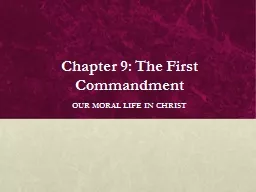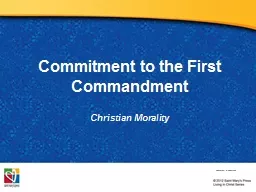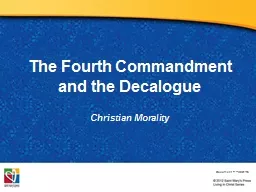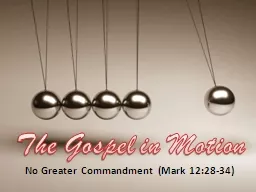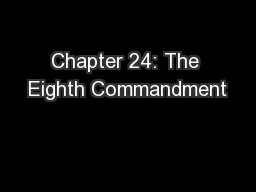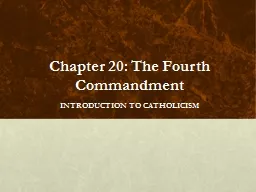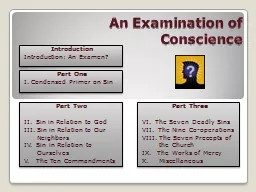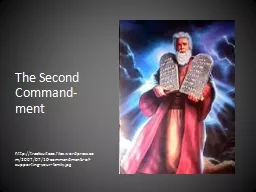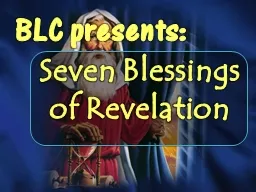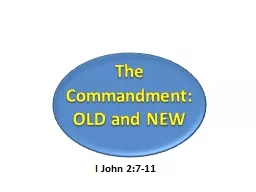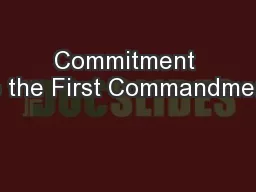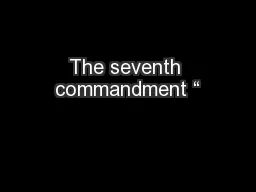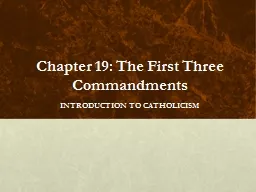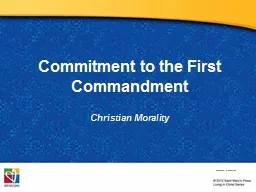PPT-Chapter 9: The First Commandment
Author : cheryl-pisano | Published Date : 2019-03-02
OUR MORAL LIFE IN CHRIST ANTICIPATORY SET After reading the story of Peter and Rebecca respond in writing to the following question and then discuss Did Peter
Presentation Embed Code
Download Presentation
Download Presentation The PPT/PDF document "Chapter 9: The First Commandment" is the property of its rightful owner. Permission is granted to download and print the materials on this website for personal, non-commercial use only, and to display it on your personal computer provided you do not modify the materials and that you retain all copyright notices contained in the materials. By downloading content from our website, you accept the terms of this agreement.
Chapter 9: The First Commandment: Transcript
Download Rules Of Document
"Chapter 9: The First Commandment"The content belongs to its owner. You may download and print it for personal use, without modification, and keep all copyright notices. By downloading, you agree to these terms.
Related Documents

